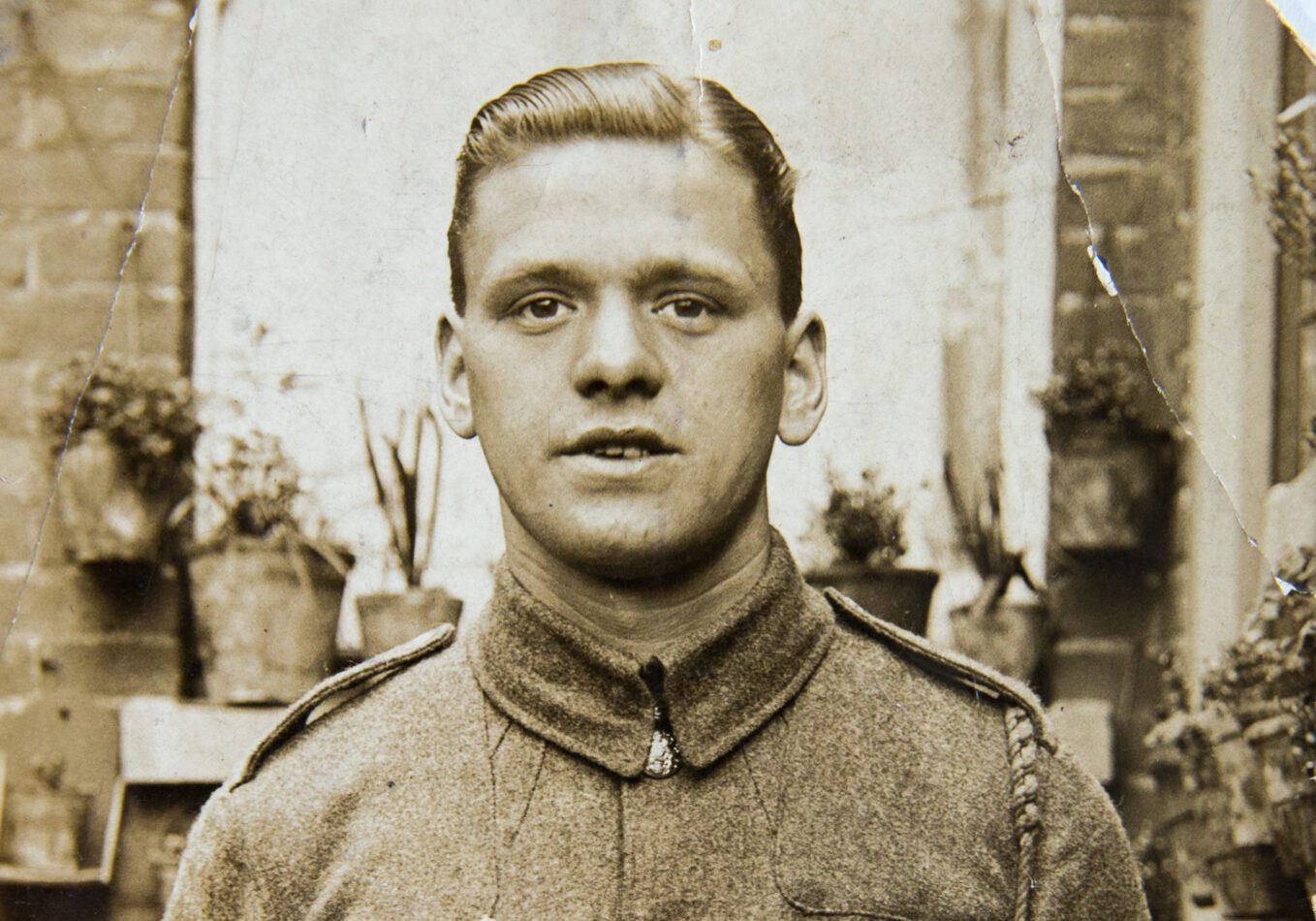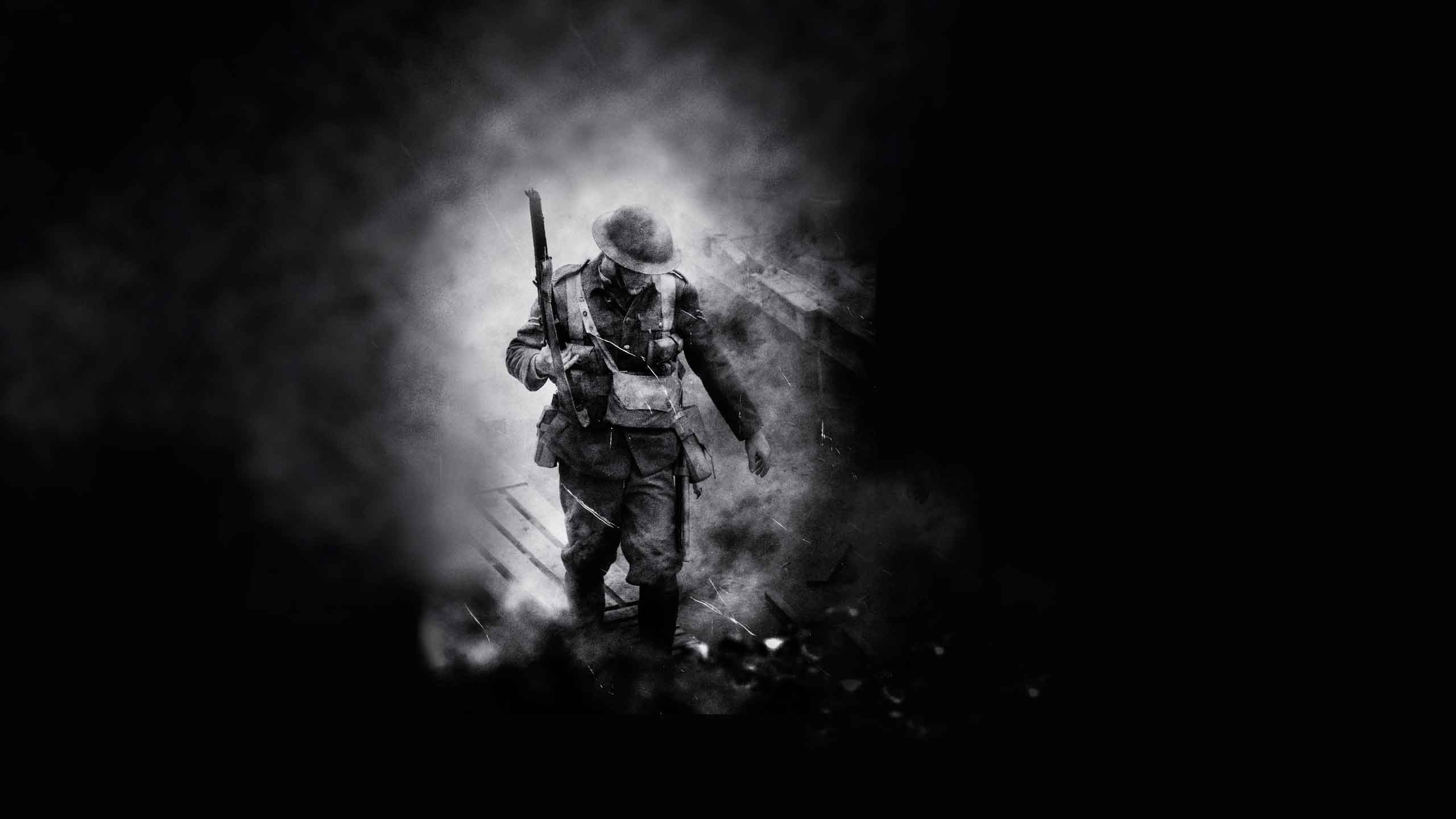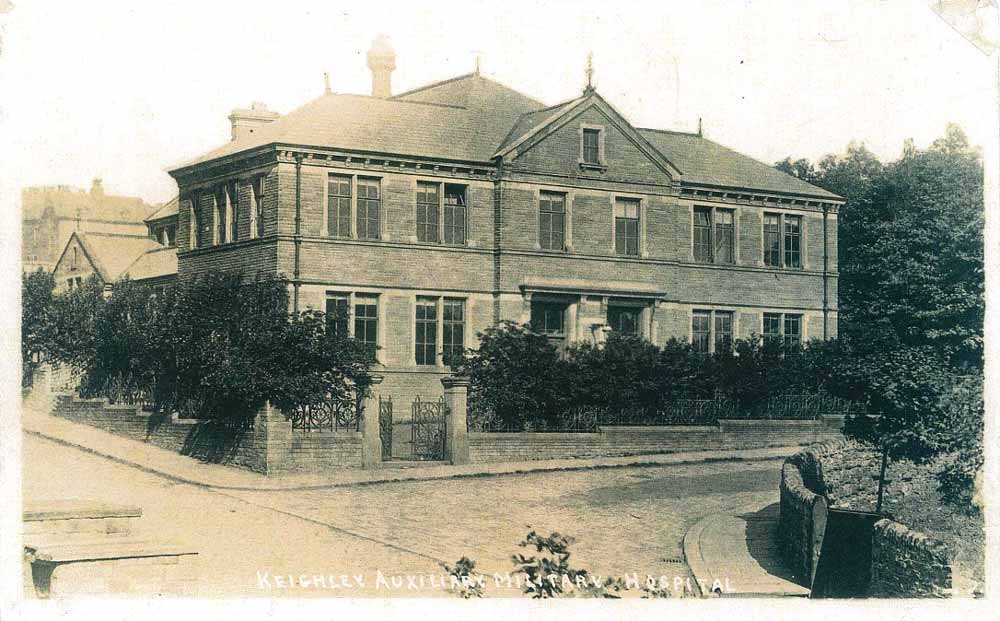
Mystery of the Silent Soldier
by Ian Dewhirst
One Saturday night in October, 1915, Keighley police picked up a soldier unconscious in Church Street. He was taken to an Ambulance Auxiliary Military Hospital in Spencer Street Congregational Sunday School, where Dr William Scatterty, its officer-incharge, found his pulse “a mere flicker.”
The soldier seemed about 26 years old, “finely-built,” with fair hair and a nose which had once been broken. A scar on his arm suggested a wound, while papers on him showed he had recently been discharged from the 4th London General Hospital. At night he suffered from nightmares, as if he “lived his battles over again.”
During the next few days his condition improved. He responded to music and pictures – indeed he paid a visit to a picture house – but was unable to speak. He communicated by writing, but seemed confused.

He wrote his name as Herbert Johnson of the King’s Own Scottish Borderers, yet their depot at Berwick-on-Tweed had never heard of him. When asked if he had relatives, he wrote “Mirfield” then “Walker, of Northorpe.”
When his photograph was published in the newspapers, a number of Johnsons, hoping to trace missing relations, wrote to Dr Scatterty, without success. A Bradford woman thought he might be a Scots soldier she knew, but as the latter had a finger missing this was out of the question.
Meanwhile at Beeston Hill, Leeds, neighbours of a Mrs Florrie Bolton kept trying to persuade her that the picture showed her husband James, though Mrs Bolton herself “hardly knew whether to believe the man was her husband or not.” James Bolton, married for four years, with two children, was a Reservist who had re-enlisted in the West Riding Regiment in 1914, and had last been heard of when reported wounded six months before. He had once suffered a broken nose.
So Mrs Bolton was persuaded to go to Keighley to see the mystery soldier. “It’s Florrie Bolton,” he wrote of his visitor. “They call her husband Jimmy Bolton. I have seen him.”
Then, after again giving his name as Herbert Johnson, he drifted on to calling himself Herbert Bolton.
Later he asked about his two young daughters Nellie and Lillie, and wrote: “I am James Bolton, 14149, Duke of Wellington’s. I want to go home with my wife. I will be quite safe with her and should love to see the children.”
“But he is so different,” Mrs Bolton poignantly observed. Her husband had sported a heavy moustache, but this man was clean-shaven. When shown a photograph of James Bolton, he imitated using a razor and “put up his hands in a boxing attitude.” James Bolton had boxed.
When Mrs Bolton asked him if he remembered The Mulberry, a public house he used to go to, he raised his hand to his mouth as if drinking. And he kept touching Mrs Bolton’s mackintosh. She explained that her husband had once written from a training camp: “Whenever I see anybody in a mackintosh I think of you.”
A couple of days later, when Mrs Bolton again visited the Keighley Ambulance Auxiliary Hospital, she had resolved her doubts to the extent of asking if she could take him home, but this was not allowed. Three friends who accompanied her felt sure the soldier was indeed her husband. He, incidentally, had made himself useful at a flag day in aid of hospital funds by accosting visitors with a collecting box, and raised about ten shillings!
“The younger Herbert had been wounded and gassed, which, said his father, “caused him to lose his speech, and it has also affected his head.”
The following week, Mrs Bolton saw him again, along with her mother-inlaw and daughter Nellie. He seemed to recognise them, and they all went out for a walk. The mystery appeared virtually cleared up… but not for long. The first Sunday in November Herbert Walker, a Burnley shoemaker, arrived at the hospital claiming the soldier was his son, also called Herbert, who when war broke out had joined the King’s Own Scottish Borderers under the name (to complicate matters further) Herbert Johnson.
The younger Herbert had been wounded and gassed, which, said his father, “caused him to lose his speech, and it has also affected his head.” He had been discharged from a London hospital the previous month, had returned home to Burnley, then disappeared.
Mr Walker senior and another son, Percy, correctly identified tattoos on the soldier’s arms (“the figure of a lady on one and Buffalo Bill and a sailor boy on the other”) while his handwriting seemed to correspond with letters from Herbert Walker, who had also broken his nose as a boy.
Mrs Bolton, on the other hand, had produced no examples of her husband’s writing. She had never mentioned any tattoos either, although Mrs Walker was adamant that her son had got tattooed some years earlier, “when he was in the old Burnley Militia.”
It was recalled that, soon after being found in Keighley, the soldier had written “Walker, of Northorpe.” Now Mr Walker senior, corroborated by Percy, explained that many of his relatives were from Northorpe, near Mirfield.
To allay any suspicion that James Bolton and Herbert Walker might have been one and the same man, it was stressed that the latter had never been married. And “The Dumb Soldier,” as the papers were by now calling him, recognised the Walkers.
The case had reached an impasse. “How Mrs. Bolton comes to claim him as her husband passes my comprehension,” declared Mr Walker; while Mrs Bolton just as firmly “had absolutely no doubt the soldier was her husband.”
At night he suffered from nightmares, as if he “lived his battles over again”
The opinions of others were contradictory. A former comrade of Bolton’s at the Duke of Wellington’s depot identified him, yet two former workmates failed to. When the Dumb Soldier wrote for their benefit: “I know you, you worked at Hudson’s Foundry at Gildersome. Mr Robinson was our foreman,” the pair could not get over the fact that he looked ten years younger than Bolton, and was taller.
Even James Bolton’s brother could not recognise him. A copy of Bolton’s attestation details included both similarities and differences. Meanwhile, the Scottish Borderers at Carlisle found they had an A. Johns missing!
“Scores” of Herbert Walker’s former workmates were sure it was him (though not all had actually seen him), one even recollecting the tattoo with the motto “The ruin of man” – presumably this referred to the figure of a lady.
“Her joy was indescribable,” reported the press at the time,”
It was established that “The Dumb Soldier” had indeed got off a train at Burnley late one night in the earlier part of October. He had “attracted the attention of the railway officials by his conduct,” being unable to make them understand where he wanted to go. Eventually he had written “H. Walker, Tentre Street” on a piece of paper, and the booking clerk had taken him to Mr Walker’s in a taxi. He had lived with the Walkers some days, ostensibly as their son; although, when faced with this fact now, he wrote plaintively: “I do not acknowledge it, sir.”
Poor Mrs Bolton was advised to stay away from Keighley. In the end, “The Dumb Soldier” – who had “appeared very much agitated” whenever members of the Walker family visited him – resolved matters for himself.
One Saturday night, four weeks after he had been found in Keighley, he left the Ambulance Auxiliary Hospital and walked to Bingley. At Bingley he turned up at Mrs Bolton’s at Beeston Hill, knocking and shouting “Open this door!”

The auxiliary military hospital at Spencer Street Congregational Sunday School, Keighley, where ‘The Dumb Soldier’ was housed.
“Her joy was indescribable,” reported the press at the time, “because she realised at once that he had recovered his power of speech.”
She took him in, her children recognised him as their father, and thus on a happy ending the story faded from the busy headlines. Interviewed a day or two later (he was not allowed to remain at Mrs Bolton’s but was admitted into the East Leeds Military Hospital), the no longer Dumb Soldier still seemed in a dazed condition and occasionally lapsed into semi-consciousness, but was able to tell a reasonably coherent story.
“I know I am James Bolton,” he insisted, “and I remember everything now” – how he had worked at Hudson’s foundry at Gildersome, been recalled as a Reservist in the Duke of Wellington’s, wounded in France, captured at St Eloi, eventually escaping to the British lines and being attached to the Scottish Borderers “with whom he served under the name of Johnson, which had been given to him by his comrades because of his skill as a boxer.”
He admitted that he had lived with the Walkers at Burnley for a week. Whenever he had attempted to explain that he was not their son, “they seemed to think I was off my head and tried to pacify me.”
After leaving them, he had been trying to reach his wife in Leeds on the night he had been found collapsed in Keighley.
His version of events, albeit curious, appears to have been generally accepted at the time. In essence, the case seems broadly logical. As the mystery soldier had spent a week at the Walkers’, his muddled mind had absorbed information about them, as they had gained knowledge of him.
But many loose ends remain, most notably why, assuming he really was James Bolton and if the Burnley booking clerk was correct, had he wanted taking to Mr Walker’s address in the first place?
Ultimately the most poignant figures in the “Dumb Soldier” mystery are the rival contenders, desperately trying to identify or replace a missing loved one, and the apparent uncertainty of both Walker and Bolton claimants is surely explicable. One niggling doubt remains, in view of the possibility of being able to manipulate contacts with two separate households, each ignorant of the other. Could the son from Burnley and the husband in Leeds have been one and the same man?




